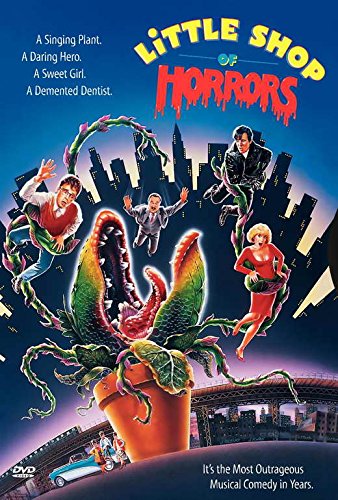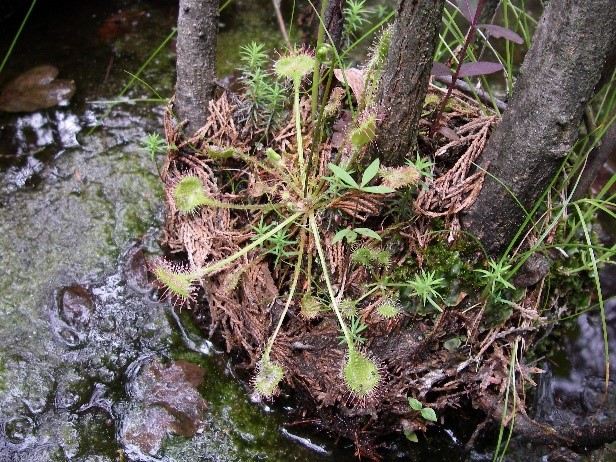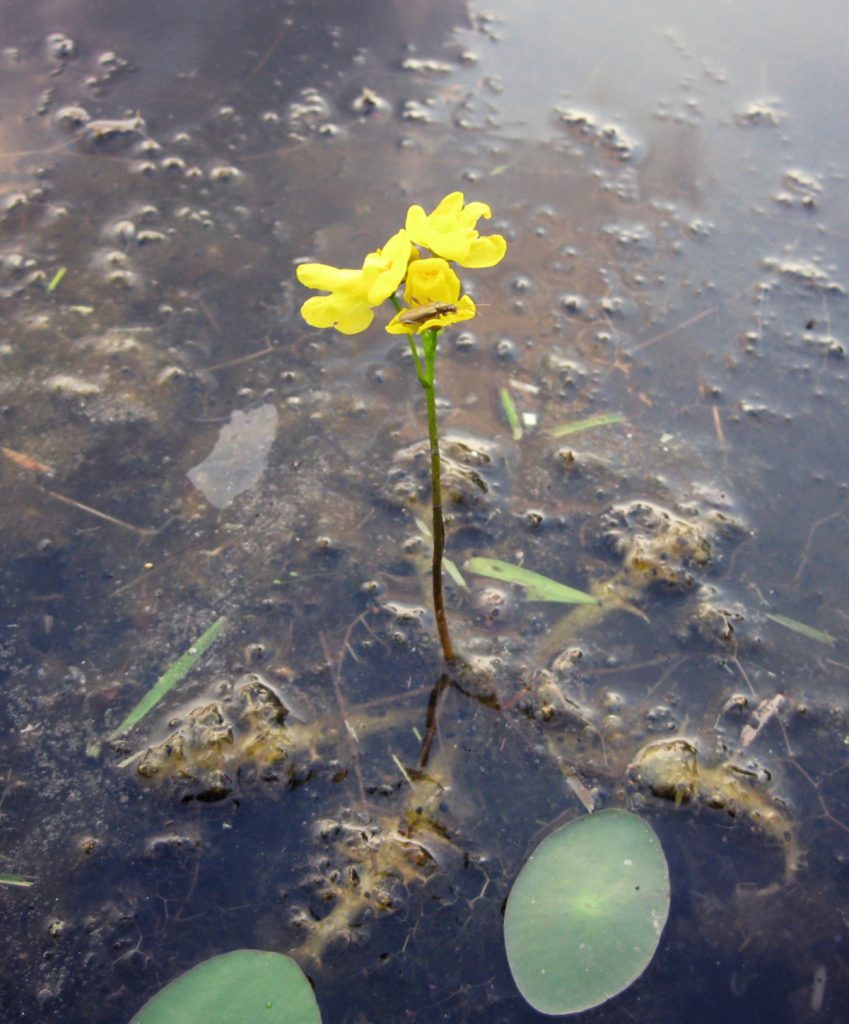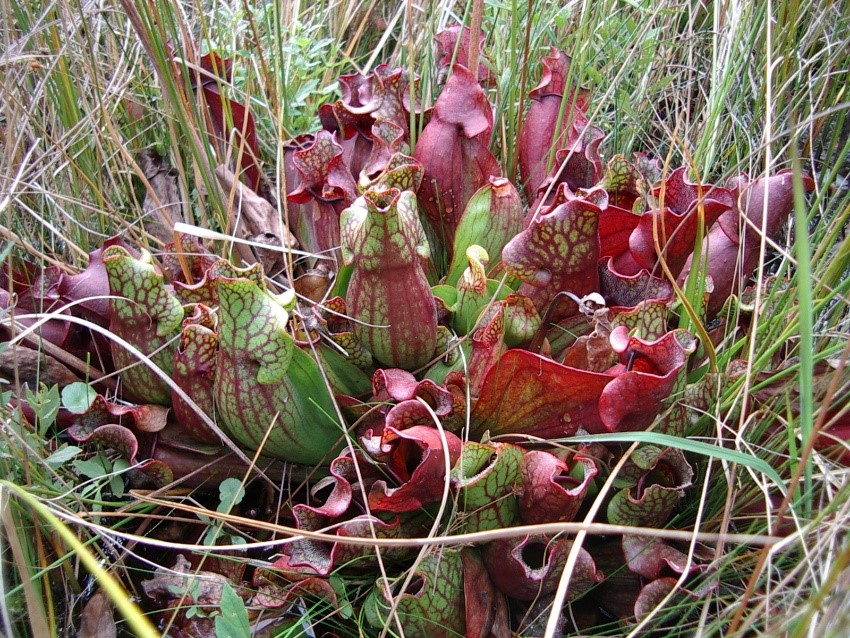
Facebook Twitter Instagram YouTube RSS Feed
Written on: March 5th, 2020 in Outreach

by Kenny Smith, DNREC Wetlands Monitoring & Assessment Program
Man-eating plants are a thing of sci-fi movies, they will send vines out to capture you or leap at you and consume you but back in the real-world carnivorous plants are a real thing. Our world consists of more then 600 known species of carnivorous plants that use varying tactics to capture and digest their prey1. These plants mostly consume insects but on occasion can consume small mammals, amphibians, fish, and even birds if the opportunity presents itself.
Carnivorous plants use a trapping mechanism which consists of a modified leaf that draws prey into the plant. The mechanism could be in the form of a hollow leaf with liquid to passively collect and digest prey or it could be an active trap that rapidly closes its modified leaves to catch prey. The plant then relies on bacteria or enzymes to breakdown the prey into usable nitrogenous compounds and salts1.
While these plants are carnivorous most of them still create food by photosynthesis, like other plants. The meat-eating habit or adaptation supplements the diet to counteract the poor soil and environment in which they live. Most of these plants are found in wetlands or open water environments where the nutrients available are low.

Delaware is home to 17 different species of carnivorous plants contained in 3 families; these are sundews, bladderworts, and pitcher plants. Of these 17 species, 4 species have not been found in Delaware for over 20 years and 6 species are considered extremely or very rare in Delaware2. Many of these plants are in danger of being lost due to habitat loss and over-collection3.
Read below to learn a little more about these interesting and unique plants.
There are about 152 sundew species throughout the world. Delaware is home to 4 of them, with only 2 of them found in state in the last 20 years. The Spoon-leaved Sundew (Drosera intermedia) is the most common sundew while the Roundleaf Sundew (Drosera rotundifolia) is a very rare species in Delaware2.

Both of these species are a perennial plant that can be found in Atlantic white cedar swamps, which are a unique wetland type in Delaware. Sundew species generally can survive better than other carnivorous plants in response to disturbance, which makes them one of the hardiest plants of the carnivorous plant group4.
Sundews have leaves covered in stalked glands that ooze sticky mucus. Sundews get their name from the sticky mucus appearing to glisten in the sun like a morning dew. After prey is trapped on the sticky hairs the edges of the leaves roll up to enclose the prey.
The bladderwort genus is the most diverse and widespread of all carnivorous plants with 220 species that range from temperate to tropical habitats. Although Delaware is home to 12 bladderwort species, 4 of these species are considered extremely or very rare in our landscape. The Purple Bladderwort (Utricularia purpurea) and the Not-fused Swollen Bladderwort (Utricularia inflata) are the states rarest bladderwort species 2 .

Bladderworts are usually found in open water and are an aquatic perennial plant. Bladderworts use a suction type trap. They have bladders that sit under water which contain tiny hairlike projections at the opening. When a passing prey stimulates these hairs, the plant will suddenly inflate the flattened bladder which sucks the prey in, and close a trap door to prevent escape.
Very similar to most aquatic plants that live in a climate with a cold winter they have to prepare. Bladderworts do so by creating a special bud-like structure called a turion that sinks to the bottom and awaits for warmer weather. This turion contains a mass of nearly formed leaves on a stem that has not elongated yet. This mass forms and grows in response to decreasing day-length.
Pitcher Plants can be found throughout the world but Delaware only has one species, the Northern Purple Pitcher plant (Sarracenia purpurea)2. This species is extremely rare in Delaware and can be found in Atlantic White Cedar swamps, which also happens to be a state unique and rare wetland type.
Based off the name you could guess that this plant uses a pitcher or pitfall trap to harvest prey. This pitcher mimics flowers with its coloring and puts off decaying smells of previous victims to attract flies and other insects looking for food. Once the prey enters the pitcher, they are met with a waxy surface leading to a pool of water. To prevent the insect from simply flying away, the plant supplies a wetting agent that sticks to the insect’s wings keeping it grounded3.

Once the meal is trapped, the pitcher plant has a couple of mechanisms to digest their food:
While the plant relies on prey falling into the leaves and decaying, many animals use the pitcher plant to fulfill a life cycle phase, like the larval stage of mosquitoes, or some frogs have been found to sit in the pitchers and consume the insects that the plant attracts.
1The Editors of Encyclopedia Britannica. “Carnivorous Plant” Encyclopedia Britannica, Encyclopedia Brittannica Inc., 18 Oct 2017, https://www.britannica.com/plant/carnivorous-plant
2McAvoy, W.A. and Bennett, K.A. The Flora of Delaware: An Annotated Checklist. Delaware Department of Natural Resources and Environmental Control, 2001
3” Carnivorous Plants/Insectivorous Plants.” Carnivorous and Insectivorous Plants Online, Drosera (Sundew), Utricularia (Bladderworts), and Sarracenia (Pitcher Plants). Botanical Society of America, https://botany.org/Carnivorous_Plants/
4Drosera Rotundifolia, Fire Effects Information System (FEIS), United States Forest Service, https://www.fs.fed.us/database/feis/plants/forb/drorot/all.html